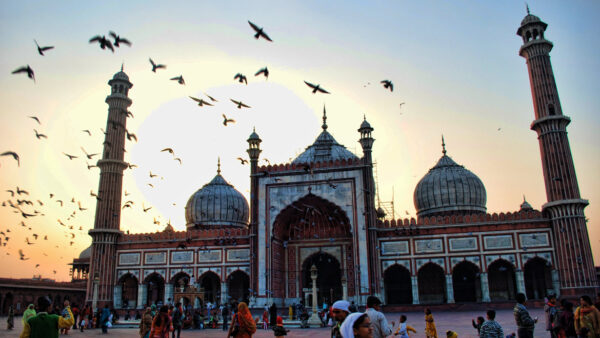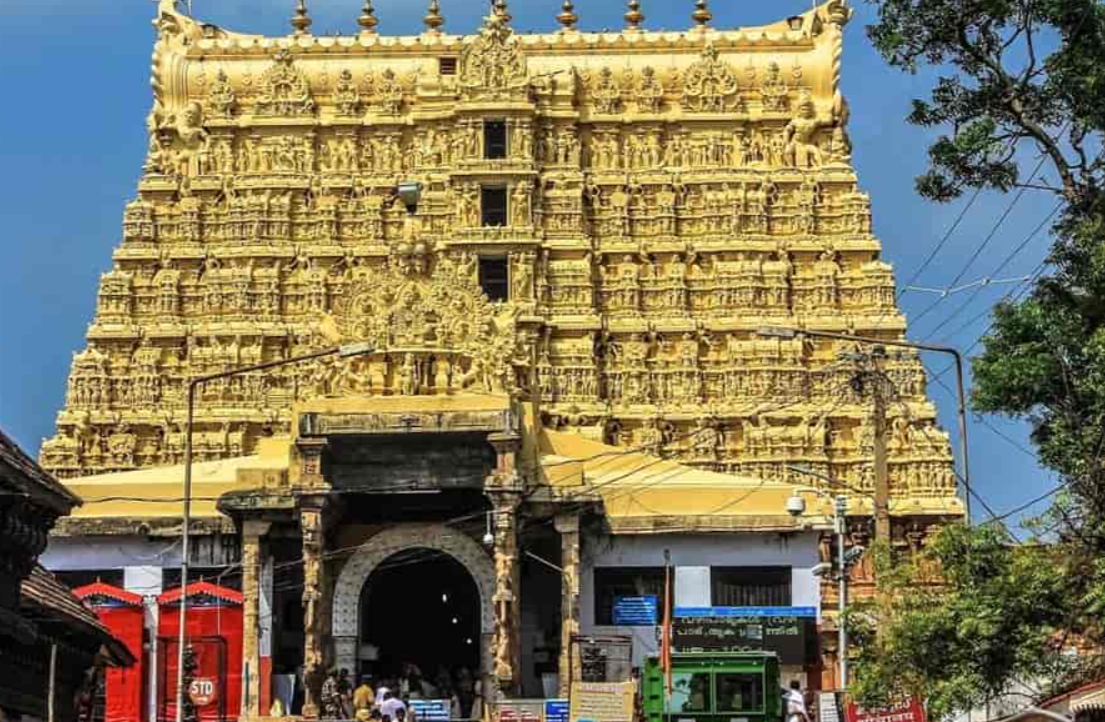In India, religious beliefs are deeply ingrained in the cultural fabric of the nation. While Hinduism has its numerous temples, Islam is celebrated through a rich array of dargahs and mosques. The term “mosque” is derived from the Arabic word ‘Masjid,’ which means a place of complete subordination to the divine. These sacred spaces serve not only as places of worship but also as centers for communal events, social gatherings, and education. In this article, we explore some of the biggest mosques in India, each a testament to the grandeur and diversity of Islamic architecture.
Top 10 Biggest Mosques in India
1. Jama Masjid, New Delhi

The Jama Masjid, built by Emperor Shah Jahan in 1656, stands as one of the largest and most impressive mosques in India. With a capacity to accommodate around 25,000 people, it is renowned for its architectural brilliance. Constructed with red sandstone and white marble, the mosque features two majestic minarets, three grand domes, and exquisite marble carvings. The main prayer hall, flanked by numerous smaller domes, surrounds a central dome. A mihrab, indicating the direction of Mecca, is placed on the central wall of the prayer hall, while a pulpit, or minbar, lies adjacent to it for the imam’s sermons. Jama Masjid not only holds significant religious importance but also attracts numerous tourists annually due to its striking artifacts and historical charm.
2. Taj-ul-Masajid, Bhopal
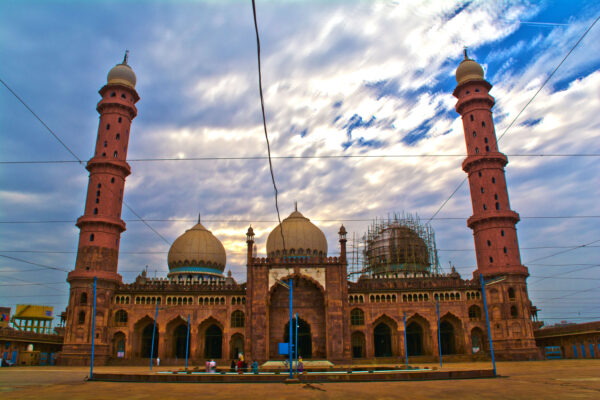
Known as the “Crown of the Mosques,” the Taj-ul-Masajid in Bhopal is one of the largest mosques in India. It boasts the highest capacity of over 100,000 individuals. Covering an area of 25,000 square feet, this mosque is surrounded by tranquil water bodies and enjoys a pleasant climate. Constructed by Shah Jahan Begum of Bhopal, the mosque’s construction faced delays due to insufficient funds, resulting in its completion only in 1971. The intricate artwork within the mosque is captivating, and the surrounding area includes a seminar hall and a library with religious texts. The Taj-ul-Masajid is visited by thousands daily, who come to offer prayers in this magnificent structure.
3. Bara Imambara, Lucknow
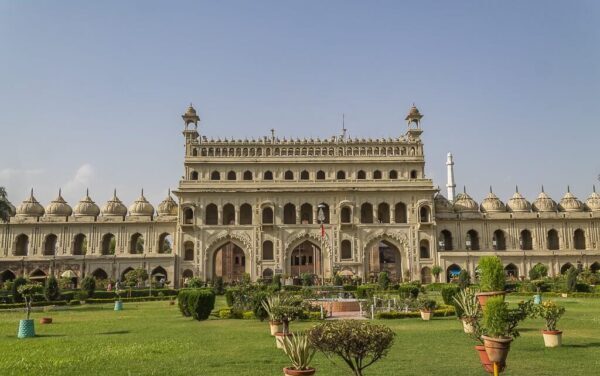
Built in 1784, the Bara Imambara in Lucknow is renowned for its vast size and historical significance. It is reputed to be the largest mosque in India, with the ability to accommodate over 300,000 individuals. Constructed by the Nawab of the Awadh dynasty, the mosque is famous for the legends surrounding it, including tales of an underground tunnel leading to various destinations such as the river Gomati and cities like Allahabad, Faizabad, and Delhi. Although many have tried to explore these tunnels, they remain shrouded in mystery.
4. Mecca Masjid, Hyderabad
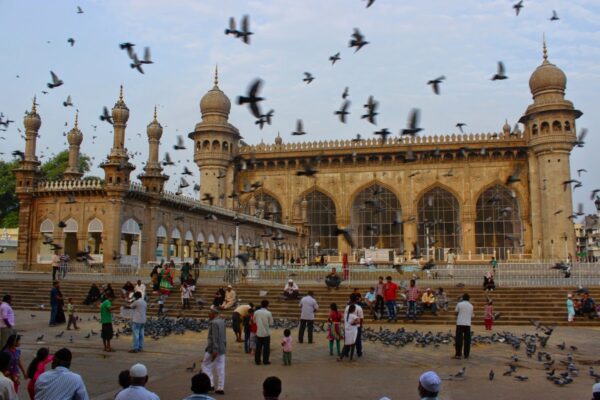
The Mecca Masjid, one of the oldest mosques in India, was built in 1694. Located in Hyderabad, it can accommodate 10,000 devotees and is the second-largest mosque in India. The mosque’s construction involved importing soil and bricks from Mecca, adding to its significance. A unique aspect of the Mecca Masjid is a small slab bench near a pond that is believed to create an illusion of sitting in Mecca for those who sit on it.
5. Nagina Masjid
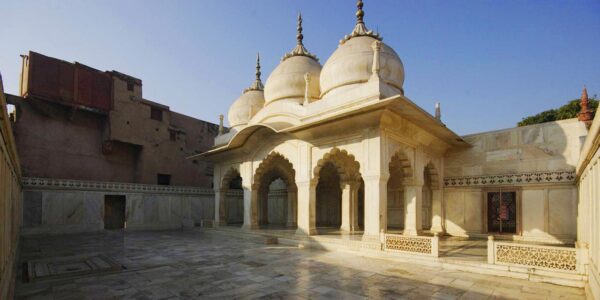
Often referred to as the Gem Mosque, the Nagina Masjid was constructed by Shah Jahan between 1631 and 1640. Designed for the use of Muslim women, the mosque features three grand arches and elegantly designed domes. Made entirely of white marble, its simple yet sophisticated architecture is complemented by a spacious balcony offering panoramic views.
6. Jamia Masjid, Srinagar
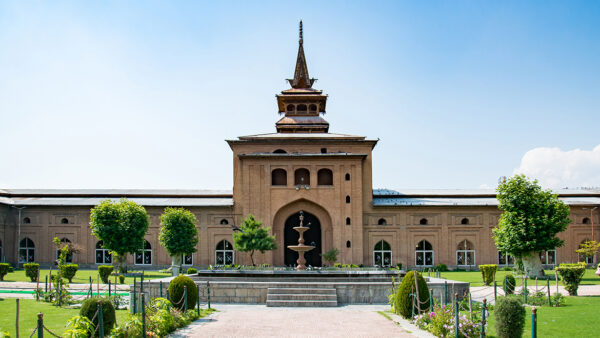
Situated in Srinagar, Jammu and Kashmir, the Jamia Masjid is one of the biggest mosques in India, with a capacity of 33,000 people. Built by Sultan Sikandar in 1402, it is an important religious site in Kashmir. The mosque’s architecture is reminiscent of Persian design and resembles a Buddhist pagoda. It covers an area of 384 by 381 feet and features four turrets connected to a large hall with a picturesque garden in the center. The mosque is a popular destination for prayers, especially on Fridays.
7. Chota Imambara
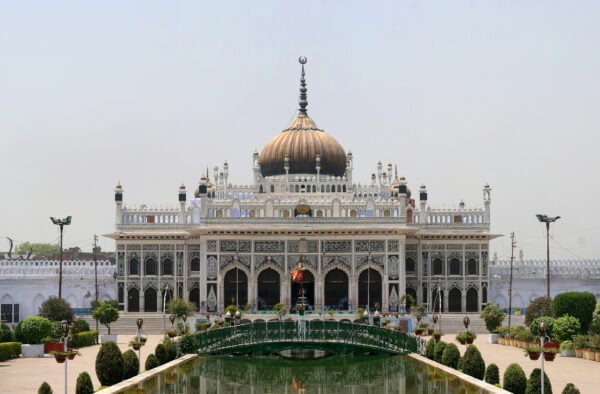
Adjacent to the Bara Imambara in Lucknow, the Chota Imambara, or “Small Imambara,” is a noteworthy mosque despite its name. It serves as a mausoleum for Nawab Muhammad Ali Shah of Awadh and includes two halls and a Shehnasheen. The exterior is decorated with Quranic verses in beautiful Islamic calligraphy, making it a significant site in Islamic architecture.
8. Jama Masjid, Bhilai
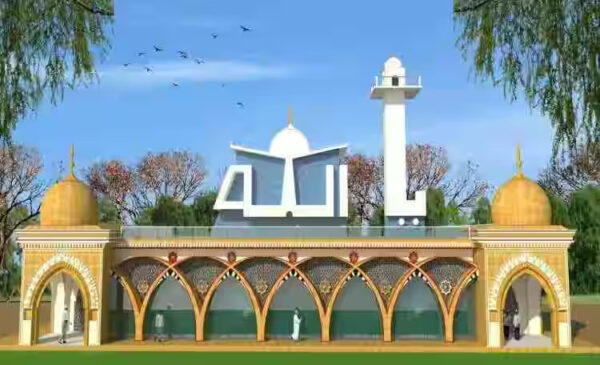
The Jama Masjid in Bhilai, constructed in 1967 by the Bhilai Steel Plant under the Government of Chhattisgarh, is notable for its architectural design, which resembles the Arabic script “Ya Allah.” With a capacity of 3,000 worshippers, the mosque features an alluring marble dome that is 59 feet high, including a 16-foot-high dome, and spans 100 feet in width and 120 feet in length. Its contemporary design stands out among the traditional mosques in India.
9. Aqsa Mosque, Qadian
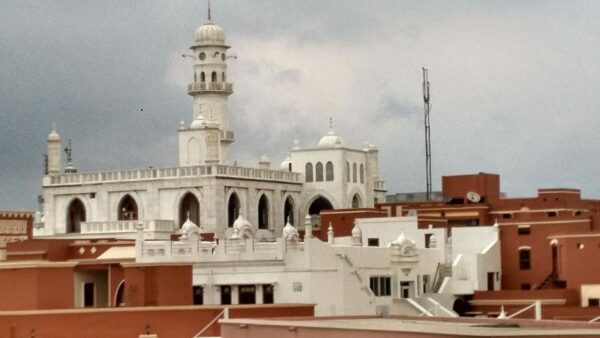
Located in the Qadian district of Amritsar, Punjab, the Aqsa Mosque was built in 1876 by Mirza Ghulam Murtaza, the founder of the Ahmadiyya movement. With a seating capacity of over 1,500, it is one of the largest mosques in India. The mosque’s historical and architectural significance makes it an important site for the Ahmadiyya community and visitors alike.
10. Jama Masjid, Agra
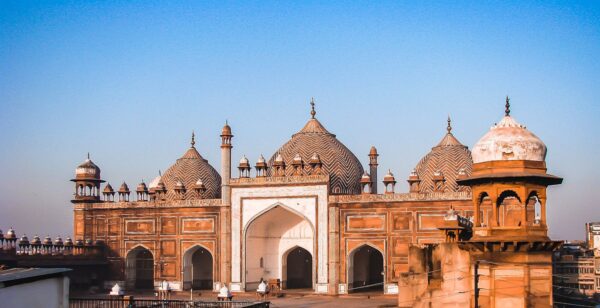
The Jama Masjid in Agra, built by Shah Jahan in 1648 for his daughter Jahanara Begum, is another prominent mosque in India. With a capacity of 1,000 people, the mosque is constructed from red sandstone and white marble, featuring intricate carvings and decorative elements that enhance its aesthetic appeal.
Conclusion
India’s rich history in Islamic architecture is vividly reflected in its mosque designs and structures. The biggest mosques in India, from the monumental Bara Imambara to the serene Nagina Masjid, serve as vital spiritual centers for Muslim communities across the country. Each mosque, with its unique architectural style and historical background, contributes to the diverse and magnificent tapestry of Islamic heritage in India.

